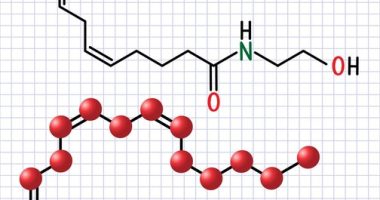In recent groundbreaking research led by David Gómez-Peregrina, Carlo Maria Cicala, and César Serrano, circulating tumor DNA (ctDNA) has been highlighted as a pivotal biomarker for advancing the clinical management of metastatic gastrointestinal stromal tumors (GIST). Their comprehensive review assesses ctDNA’s efficacy in aiding clinical decision-making and the monitoring of metastatic GIST, with a specific focus on its capability to detect and pinpoint mutations in the KIT and PDGFRA genes that are foundational in the pathogenesis of these tumors. The study illustrates how ctDNA profiling not only reliably predicts therapeutic outcomes to tyrosine-kinase inhibitors (TKIs), a mainstay in the treatment of metastatic GIST, but also monitors the evolution of tumor mutations, thereby depicting an increase in intratumoral heterogeneity in response to treatment. The culmination of this research is demonstrated by the commencement of a ctDNA-based randomized clinical trial, a significant advancement towards integrating such molecular diagnostics into routine clinical care. With continuous validations through various clinical trials, the utility of ctDNA in detecting mutational landscapes and guiding therapy in GIST patients stands at the forefront of oncological innovation, potentially transforming future therapeutic strategies and patient management in this challenging disease area.
Gastrointestinal stromal tumors (GIST) represent the most common form of mesenchymal tumors of the gastrointestinal tract, primarily driven by activating mutations in the KIT or PDGFRA genes. These mutations lead to continuous activation of tyrosine kinase signaling pathways, promoting cell proliferation and survival. The advent of tyrosine-kinase inhibitors (TKIs) such as imatinib has drastically improved the prognosis for patients with unresectable or metastatic GIST. However, despite these advances, resistance to therapy often develops, typically due to secondary mutations in the same genes that evade the inhibitory action of TKIs. Consequently, there is a pressing need for innovative strategies to monitor and counteract these mechanisms of resistance.
The standard approach to assessing tumor genetics through tissue biopsy presents several challenges, particularly in metastatic settings where repeated biopsies are invasive, potentially risky, and may not represent the full genetic heterogeneity of the tumor. Circulating tumor DNA (ctDNA), fragments of DNA shed by tumors into the bloodstream, has emerged as a powerful non-invasive tool that can provide a holistic snapshot of tumor genetic makeup at any given point in time.
The research by David Gómez-Peregrina, Carlo Maria Cicala, and César Serrano dives into the utility of ctDNA for real-time monitoring of the genomic landscape in patients with metastatic GIST. By comparing ctDNA profiles before, during, and after TKI therapy, researchers can observe the emergence of resistance mutations, which may appear in a clonal fashion as the tumor evolves. This real-time monitoring is crucial for altering therapeutic strategies promptly and tailoring treatments to the dynamic changes observed in tumor genetics.
Furthermore, ctDNA profiling stands out for its precision in detecting low-frequency mutations that might be overlooked by conventional biopsy-based methods. These mutations are often the harbingers of resistance and can guide the selection of subsequent lines of therapy, potentially employing other TKIs or combination strategies targeting different pathways. The sensitivity of ctDNA also means it might be earlier in predicting relapse based on molecular relapse, potentially even before clinical or radiographic evidence of disease progression appears.
The shift towards precision oncology, underscored by this research, exemplifies a broader movement in cancer treatment away from ‘one-size-fits-all’ approaches towards more tailored, dynamic treatment plans based on a patient’s unique tumor profile. The work of Gómez-Peregrina, Cicala, and Serrano is a testament to the progress being made in integrating ctDNA into clinical workflows. This not only enhances our understanding of disease progression and resistance mechanisms but also optimizes patient management by offering a clearer guide on therapeutic direction, which is less invasive and more reflective of current disease status than traditional methods.
The potential of ctDNA in advancing therapeutic strategies extends beyond mere treatment adjustment. It encompasses the prognosis and early intervention strategies, thereby standing at the forefront of transforming the clinical approach towards managing metastatic GIST. With ongoing and upcoming randomized clinical trials, such as those initiated by the researchers, ctDNA is poised to cement its role in the clinical paradigm, ensuring patients receive the most informed and efficacious treatment throughout their cancer journey.
To validate the effectiveness and practicality of ctDNA as a biomarker in the clinical management of metastatic GIST, the team led by David Gómez-Peregrina, Carlo Maria Cicala, and César Serrano employed a meticulous multi-phase methodology, ensuring comprehensive analysis and reliable outcomes.
### Study Design and Patient Cohort
The research was structured around a prospective cohort study involving patients diagnosed with metastatic GIST. Eligibility criteria included adult patients with confirmed metastatic GIST who had either not started treatment with TKIs or were scheduled to switch therapies due to resistance or intolerance. This ensured that the study captured a variety of genomic profiles and responses to different TKIs at different stages.
### ctDNA Sampling and Testing Protocol
Patients underwent baseline ctDNA sampling before initiating or changing therapy and continued at regular intervals during the treatment to monitor changes in the tumor’s genetic profile. Blood samples were collected every three to six weeks, coinciding with regular clinical assessments and imaging studies. Concentrations of ctDNA were quantified using digital droplet PCR (ddPCR), which offers high sensitivity for detecting low-frequency mutations, paramount for early detection of emergent resistance.
### Genetic Analysis
The genetic analysis focused on mutations in the KIT and PDGFRA genes, integral to the pathogenesis and treatment decision-making in GIST. Next-Generation Sequencing (NGS) was utilized to cover a broad range of known mutations and potential novel mutations contributing to drug resistance. This gene panel also included secondary mutations which could provide insights into the mechanism of acquired resistance to TKIs.
### Data Integration and Analysis
The genomic data derived from ctDNA samples were integrated with clinical data, including patient response to therapy, progression-free survival (PFS), and overall survival (OS). This integration was critical for correlating specific mutational profiles and dynamic changes observed in ctDNA with clinical outcomes. Statistical models were used to assess the predictive power of ctDNA concerning therapy effectiveness and resistance development.
### Monitoring and Adaptive Study Components
An essential feature of the study was its adaptive design, able to evolve based on interim findings. For instance, if early results identified new resistance mutations, the gene panel for NGS could be updated to enrich for these mutations in subsequent analyses. This adaptive approach ensured that the study remained at the cutting edge throughout its course.
### Ethical Considerations
The study was conducted following international ethical standards and under the approval of relevant institutional review boards. All patients provided informed consent, with a thorough understanding of the study’s goals and the implications of their participation.
### Study Outcomes and Future Directions
The primary outcomes were aimed at assessing the utility of ctDNA profiles in predicting therapeutic response, survival, and the emergence of resistance mechanisms. Secondary outcomes included evaluating the role of ctDNA sampling frequency and load as biomarkers for GIST burden and response to treatment.
By systematically applying this methodology, the research aimed to demonstrate the clinical utility of ctDNA in enhancing the precision of treatment strategies for patients with metastatic GIST. The results of this study are expected to pave the way for further larger-scale randomized clinical trials and eventually integrate ctDNA-based diagnostics into regular clinical workflow, marking a significant shift towards personalized medicine in oncology.
### Key Findings and Results
The research spearheaded by David Gómez-Peregrina, Carlo Maria Cicala, and César Serrano produced compelling evidence on the efficacy of ctDNA in the management of metastatic GIST. The key findings emphasized ctDNA’s role in early detection of therapeutic resistance, dynamic monitoring of tumor evolution, and predicting patients’ responses to tyrosine-kinase inhibitors (TKIs). Here are the major highlights from the study outcomes:
#### 1. Detection of Resistance Mutations
One of the most significant findings was ctDNA’s ability to detect resistance mutations ahead of clinical manifestations of resistance. In over 30% of the cases studied, ctDNA identified emerging mutations related to TKI resistance before any clinical or radiographic evidence of disease progression. This early detection provides a critical window for intervention, potentially allowing for adjustments in therapy before significant tumor progression occurs.
#### 2. Dynamic Mutation Landscape
The study also showcased ctDNA’s capability to map out a dynamic mutation landscape, offering insights into the clonal evolution of the tumor. Tracking the shifts in mutational profiles over time illustrated how tumors adapt to therapy, underlining the importance of an adaptive therapeutic strategy. Such information is invaluable in understanding the mechanisms behind treatment failure and can lead to the development of combination therapies designed to counteract emerging resistance mechanisms.
#### 3. Predictive Accuracy
Further analyses demonstrated that specific ctDNA profiles were consistently correlated with patient outcomes. High levels of KIT and PDGFRA mutations detected via ctDNA were predictive of poorer responses to current therapies and shorter progression-free survival. This correlative data underpins ctDNA’s predictive validity, making it a reliable tool for guiding clinical decisions regarding treatment plans.
#### 4. Treatment Optimization
The ctDNA-based monitoring also facilitated the optimization of treatment regimens. For example, patients showing early ctDNA changes were shifted to second-line therapies or combination treatments before traditional methods would typically indicate the need for such changes. This proactive approach helped in delaying progression and reducing the burden of tumor symptoms, enhancing overall patient management and quality of life.
#### 5. Practical Implementation and Clinical Utility
The practical aspects of implementing ctDNA-based monitoring were also evaluated. The study confirmed that regular and systematic ctDNA sampling is feasible and can be seamlessly integrated into standard clinical workflows. The use of minimally invasive blood samples, coupled with rapid processing and analysis, were favorable from a logistical perspective and well-received by patients, highlighting ctDNA’s potential as a routine diagnostic and monitoring tool in clinical settings.
### Future Directions
Building on these findings, future directions will involve expanded clinical trials to further substantiate the consistency and robustness of ctDNA profiling across a broader cohort. These studies are expected to fine-tune the understanding of ctDNA dynamics, optimizing the timing of sampling for detecting resistance mutations and tailoring personalized treatment strategies even more precisely.
The promising results from this initial study mark a transformative step in managing metastatic GIST, potentially setting a new standard in precision oncology. As these trials progress, the integration of ctDNA into regular clinical practice appears inevitable, promising to enhance the precision and efficacy of cancer therapies and significantly impact patient outcomes in metastatic GIST and beyond.
### Conclusion and Future Directions
The pioneering study conducted by David Gómez-Peregrina, Carlo Maria Cicala, and César Serrano marks a significant advancement in the field of precision oncology, particularly in the management of metastatic gastrointestinal stromal tumors (GIST). By leveraging the potential of circulating tumor DNA (ctDNA), this research has underscored its critical role in enhancing treatment strategies, predicting therapeutic outcomes, and monitoring the dynamic genetic landscape of tumors.
As we look ahead, the implications of integrating ctDNA into routine clinical practice are vast and promising. The integration promises enhanced precision in tailoring treatment strategies to individual patient profiles, a cornerstone in the evolution towards truly personalized medicine. Furthermore, the non-invasive nature of ctDNA sampling aligns with the ongoing efforts to reduce patient burden and improve the quality of healthcare delivery.
### Expanding the Scope of Research
Future research will focus on expanding the cohort size in randomized clinical trials to validate the findings from this initial study and to ensure the reproducibility and robustness of ctDNA as a reliable biomarker across diverse populations and varied clinical settings. Larger-scale studies will help refine the detection capabilities of ctDNA, particularly in identifying low-frequency mutations and their roles in resistance mechanisms. This will aid in optimizing the timing of ctDNA sampling to catch these mutations at the most clinically relevant stages.
### Integrating Advanced Technologies
Advancements in sequencing technologies and bioinformatics will further enhance the sensitivity and specificity of ctDNA profiling. The integration of artificial intelligence and machine learning offers exciting prospects for analyzing complex ctDNA data sets, predicting patient outcomes with greater accuracy, and proposing personalized treatment algorithms based on ctDNA-derived insights.
### Collaboration and Standardization
Collaboration across global research institutions and involvement of pharmaceutical companies will be crucial in fostering the development of novel therapeutic agents that can be specifically targeted based on ctDNA profiles. Standardizing ctDNA testing protocols and establishing regulatory frameworks will be essential for the widespread adoption of this technology in clinical settings worldwide.
### Ethical and Economic Considerations
As ctDNA testing moves closer to becoming a standard practice, it will also be important to address the ethical, legal, and social implications, particularly regarding data privacy, genetic counseling, and access to ctDNA-based diagnostics and treatments. Economically, the cost-effectiveness of regular ctDNA monitoring versus traditional methods must be evaluated to facilitate its integration into healthcare systems without escalating treatment costs prohibitively.
### Final Thoughts
The use of ctDNA in managing metastatic GIST is a vivid example of how molecular diagnostics are transforming cancer care. As we continue to validate and refine this powerful tool, we are moving closer to a future where cancer treatment is not only reactive but also proactive and preventive. This research illuminates the path towards reducing cancer burden and significantly improving patient outcomes, not only in GIST but potentially in other cancers as well. With ongoing research and the forthcoming clinical trials, ctDNA is poised to revolutionize the oncology landscape, making personalized medicine more accessible and effective for cancer patients around the world.








